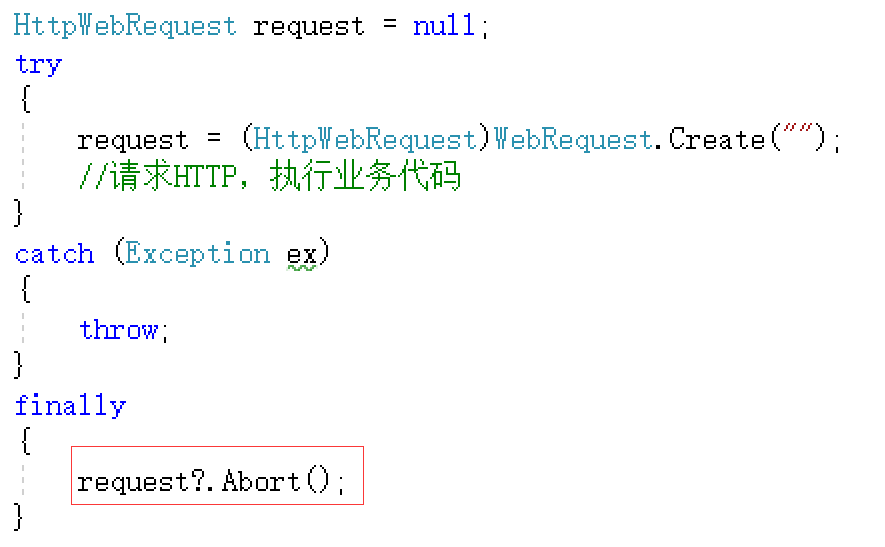Null值条件运算符属于C#6.0的语法糖
使用方法:变量名?.属性
下列Person为使用到的类
1 public class Person 2 { 3 public string Name { get; set; } 4 5 public int Age { get; set; } 6 7 public int? Height { get; set; } 8 }
如果使用下列调用方式,则会引起NullReferenceException异常

为了容错,我们一般会在代码里写这样的判断
1 Person p = null; 2 if (p!=null) 3 { 4 string pName = p.Name; 5 }
在C#6.0以后推出了Null值条件运算符,我们可以简化成这样的写法
1 Person p = null; 2 string pName = p?.Name;
当然我们也可以使用三元运算符来做判断
1 string pName = p == null ? null : p.Name;
我在项目中经常使用到该运算符,在一些带有释放资源的finally代码块中使用会引起非常的舒适

如果项目中支持C#6.0那么最好是优先使用此方法,与if使用方式来说两者的IL代码是不同的,对该运算符的IL代码有想深入了解请参考此博客https://www.cnblogs.com/linianhui/p/csharp6_null-conditional-operators.html#auto_id_1